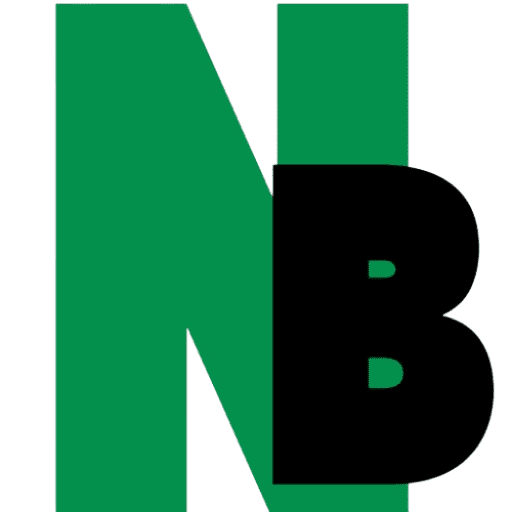Achieving a top spot on Google’s search results is the goal for many businesses and individuals looking to increase their visibility online. Being on the first page of Google dramatically boosts the likelihood of users clicking on your link. In fact, more than 75% of people never scroll past the first page of search engine results. This article dives into the actionable strategies you can implement to get your content on the first page of Google search, based on SEO (Search Engine Optimization) best practices, and offers tips directly from SEO expert David Aziz.
Understanding Google’s Ranking Factors
Google’s search algorithm considers hundreds of ranking factors when determining where your webpage should appear. While the exact algorithm is not publicly known, Google has provided guidelines that, when followed, significantly improve your chances of ranking higher.
1. Relevant Content
The most important factor in ranking high on Google is creating high-quality, relevant content that answers users’ search queries. Google’s job is to provide users with the most relevant and helpful information, so ensuring your content aligns with what people are searching for is crucial.
2. Backlinks
Backlinks, or links from other websites to yours, are a significant ranking factor. Google views backlinks as endorsements; the more reputable sites that link to yours, the higher Google is likely to rank your content. Quality matters more than quantity here — a few high-authority backlinks will weigh more heavily than hundreds of low-quality links.
3. Keywords
Optimizing your content with the right keywords is essential for being visible on Google. This means understanding what terms your audience is searching for and using those keywords strategically throughout your content.
4. Page Load Speed
Google takes page load speed into account because it directly impacts the user experience. Slow websites lead to higher bounce rates, where users leave the site quickly. Make sure your site is optimized for speed, as this can give you a competitive edge in search rankings.
5. Mobile Optimization
With more users accessing the web from mobile devices than desktops, mobile optimization is non-negotiable. Google introduced mobile-first indexing, which means Google predominantly uses the mobile version of your site for ranking and indexing. Ensure your site is responsive and performs well on all devices.
6. User Engagement Metrics
Google monitors user behavior, such as how long visitors stay on your page, how many pages they visit, and whether they quickly return to the search results (bounce rate). These engagement metrics signal whether users find your content helpful, which can impact your ranking.
Creating High-Quality Content
To rank on Google’s first page, you need to focus on creating high-quality, user-focused content. Here are the essential steps:
1. Understand User Intent
The first step to creating great content is understanding why people are searching for certain keywords. Are they looking for information, trying to make a purchase, or seeking directions? Tailoring your content to match user intent will help Google see your page as a valuable result.
For example, if someone searches for “best running shoes for beginners,” they likely want a list of shoes with detailed reviews and comparisons, not just a link to a generic shoe store.
2. Create Long-Form, In-Depth Content
Longer, more in-depth articles tend to perform better in Google rankings. Research shows that content over 1,500 words often ranks higher than shorter content because it tends to provide more value and detail, which is what Google wants to deliver to its users.
While length is not a ranking factor, the depth of your content often correlates with how well it answers users’ queries. If you cover a topic comprehensively, Google will likely view your content as more authoritative.
3. Use Keyword Research Tools
Understanding the right keywords to target is key to being found on Google. Using tools like Google Keyword Planner, SEMrush, or Ahrefs will help you discover high-value keywords related to your business. Once you have identified these, integrate them naturally into your content. Don’t overuse keywords (a practice known as keyword stuffing), as Google penalizes pages that appear spammy.
4. Optimize Meta Tags and Descriptions
Meta tags, including your title tag and meta description, are critical components of SEO. The title tag tells both users and Google what your page is about, while the meta description gives a brief summary of your page. Make sure your primary keyword appears in both, but also ensure that they’re enticing enough for people to want to click on them.
On-Page SEO: Optimizing Each Page
On-page SEO refers to the optimizations you can make directly on your website’s pages. Here are the essential elements you need to focus on:
1. Headings (H1, H2, H3)
Using headers correctly makes your content easier to read and helps Google understand its structure. The H1 tag is the primary heading of your page and should include your main keyword. Subheadings (H2, H3, etc.) help break up the content and make it scannable.
2. Internal Linking
Linking to other pages on your website not only helps Google crawl and index your site more effectively, but it also encourages users to stay on your site longer. When creating new content, look for opportunities to link to older content, and vice versa.
3. Alt Text for Images
Google can’t “see” images, so it relies on alt text to understand what an image is about. Use descriptive, keyword-rich alt text for each image to help improve your page’s visibility in both regular search and image search results.
4. URL Structure
Clean and simple URLs are favored by both Google and users. Avoid using long, complex URLs that include unnecessary numbers or characters. Instead, make your URLs short, readable, and keyword-focused.
5. Schema Markup
Schema markup is a form of microdata that helps search engines better understand your content. Adding schema to your pages can enhance your search results with rich snippets, such as review stars, recipe details, or event information, which can improve click-through rates.
Off-Page SEO: Building Authority and Trust
Off-page SEO is all about building your site’s authority in the eyes of Google. This is primarily achieved through backlinks and brand mentions.
1. Building Backlinks
Backlinks remain one of the most important factors in Google’s ranking algorithm. However, not all backlinks are created equal. Aim to get backlinks from authoritative, trustworthy sites within your industry. Some ways to build backlinks include:
- Guest Blogging: Write articles for other blogs in your niche and include a link back to your site.
- Resource Pages: Reach out to websites that have resource pages related to your industry and ask them to include a link to your content.
- Broken Link Building: Identify broken links on other websites, then offer your content as a replacement for the dead link.
2. Social Media
Although social signals (likes, shares, etc.) aren’t a direct ranking factor, social media can still help improve your site’s visibility. The more your content is shared and linked to on social media, the more likely it is to attract traffic and backlinks.
3. Brand Mentions
Google values brand authority, and mentions of your brand (even without a direct link) can help boost your credibility. Engage in industry forums, discussions, and interviews to get your name and brand out there.
Technical SEO: Ensuring Your Site is Search-Engine Friendly
Technical SEO refers to the aspects of your website that make it easier for Google to crawl and index. A technically sound website is crucial for ranking.
1. Ensure Your Site is Mobile-Friendly
As mentioned earlier, mobile-first indexing means Google predominantly uses the mobile version of your site for ranking. Use Google’s mobile-friendly test to ensure your site performs well on mobile devices.
2. Create a Sitemap
A sitemap is a file that lists all the pages of your website and helps Google understand the structure of your site. Submit your sitemap to Google through Google Search Console to ensure your pages are indexed correctly.
3. Fix Broken Links
Broken links lead to a poor user experience and can hurt your SEO. Regularly audit your site for broken links using tools like Screaming Frog and fix them promptly.
4. Secure Your Site with HTTPS
Security is a priority for Google, and sites using HTTPS are given a slight ranking boost over those that are not. Make sure your site is secured with an SSL certificate.
Monitoring and Adjusting Your SEO Strategy
SEO is not a one-time task; it requires ongoing monitoring and adjustments. Use tools like Google Analytics and Google Search Console to track your progress. Pay attention to metrics like organic traffic, bounce rate, and click-through rate to identify areas for improvement.
Conclusion: Putting It All Together
Getting to the first page of Google requires a mix of on-page, off-page, and technical SEO strategies. By following the steps outlined by David Aziz, you can increase your chances of ranking higher and driving more traffic to your website. Remember, SEO is a long-term game, and the rewards will come with consistent effort and attention.


